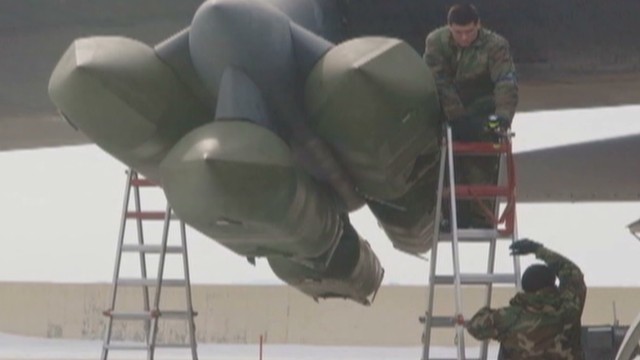

Photos by Gretchen Ertl, courtesy of MIT. A Nuclear and Countering Weapons of Mass Destruction officer, Rahon is conducting research into optimizing a detection system for use in emerging nuclear fuel cycles as part of her PhD program.

Jill Marie Rahon is earning her Doctor of Philosophy in nuclear science and engineering at the prestigious Massachusetts Institute of Technology. (Photo Credit: Photo by Gretchen Ertl, courtesy of MIT) VIEW ORIGINAL 3 / 3 Show Caption + Hide Caption – (Photo Credit: Photo by Gretchen Ertl, courtesy of MIT) VIEW ORIGINAL 2 / 3 Show Caption + Hide Caption – “I’m proud to be a Soldier and am happy to have the opportunity to serve first as a pilot and now as a scientist.” “FA 52 has a fascinatingly broad mission set, ranging from many types of physics, math and engineering to nuclear policy implementation to advising maneuver commanders but all of it ties back to supporting nuclear deterrence,” said Rahon. She completed her master’s degree at MIT, taught physics at West Point and served at the Defense Threat Reduction Agency before returning to MIT for her Ph.D. Military Academy at West Point, New York, Rahon switched from aviation to the Nuclear and Countering WMD officer field, known as Functional Area 52 - or FA 52. She earned the Soldier’s Medal, Bronze Star and Air Medal.Ī native of the Hudson Valley area of New York and graduate of the U.S. Rahon said she has also mentored ROTC cadets there.Ī former CH-47D Chinook pilot, Rahon deployed to Afghanistan three times with the 101st Airborne Division (Air Assault), serving as a platoon leader, company commander and air mission commander. (Photo Credit: Photo by Gretchen Ertl, courtesy of MIT) VIEW ORIGINAL 2 / 2 Show Caption + Hide Caption –Īccording to Rahon, MIT has a robust veteran and active-duty military presence on campus, including many engineering and business school students, staff and faculty. “The benefit of having a rigorous introduction to the many subsets of nuclear engineering outside of my research expertise is the ability to give the best nuclear advice to maneuver commanders in any situation.” “I really enjoyed the course on materials science and how different materials behave in nuclear systems - something I wouldn’t have otherwise come across in my radiation detection studies,” said Rahon. and he helped me find a research project that not only supported 52 core competencies but also had the resources in place so that I could design the experiment and start taking data immediately,” said Rahon. “As an example, my advisor understood that I had a concrete timeline to finish my Ph.D. Rahon said MIT and the Nuclear Science and Engineering Department are very supportive of military students. course curriculum is tailored to a student’s field of research while the core courses cover the breadth of nuclear science. Rahon said the core, advanced and field of study courses in the Nuclear Science and Engineering Graduate Program are rigorous but many resources are available to help students. Her research in MIT’s Laboratory for Applied Nuclear Physics leverages time-correlated neutron radiative capture signals for non-destructive isotopic analysis within nuclear treaty inspection limitations, said Rahon, who is promotable to lieutenant colonel.

program, Rahon is conducting research into optimizing a detection system for use in emerging nuclear fuel cycles.

Army Nuclear and Countering Weapons of Mass Destruction officer, is earning her Doctor of Philosophy in nuclear science and engineering at the prestigious Massachusetts Institute of Technology.Īs a part of her Ph.D. (Photo Credit: Photo by Gretchen Ertl, courtesy of MIT) VIEW ORIGINALĬAMBRIDGE, Mass.


 0 kommentar(er)
0 kommentar(er)
